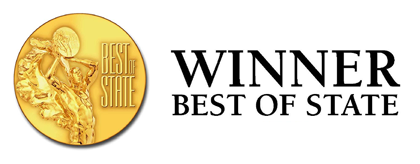Montana's #1 Security Camera Dealer & Installation Service

Business & Commercial Security Camera Systems Installed
Billings - Missoula
A 5-Star Rating You Can Trust!
We use the internet's most trusted customer review service "Shopper Approved" to document the quality of our surveillance equipment and the superior level of support we provide. All reviews are independently collected and guaranteed to be authentic. Click on the "Award Button" to check out some of our latest 5 Star Reviews!
Crime Statistics for Montana

Overall Crime Rating:
B (13.79% lower than national average)
High Risk Crimes:
Investing in a security camera system effectively protects your home and family from criminals. Research consistently shows that these devices deter crime, with a reduction of 65% or more. Additionally, having surveillance cameras provides valuable evidence of criminal activity occurring. Surveillance camera systems are a proven cost-effective method to prevent, record, and decrease the overall rate of crime and will provide both you and your family with a much-needed peace of mind.
View individual city crime ratings below:
Billings Crime Rating:
B+ (43.67% lower than national average)
Highest Risk Crime: Larceny Theft
Billings, Montana, is the most populous city in the state with a population of 117,116 as of the 2020 census. It is located in the south-central part of the state and serves as the seat of Yellowstone County. Billings is also the principal city of the Billings Metropolitan Area, which had a population of 184,167 in the 2020 census. The city has a large trade area and is a major trade and distribution center for much of eastern Montana. It is also the primary retail destination for this region. The Billings Chamber of Commerce claims that the area of commerce covers over 125,000 square miles. In 2009, it was estimated that Billings served over 500,000 people. Billings earned the nickname "Magic City" due to its rapid growth since its establishment as a railroad town in 1882. The city was named by the Crow and Cheyenne peoples as Ammalapáshkuua and É'êxováhtóva, respectively, meaning 'where they cut wood'. This name refers to a sawmill that was built in the area by early settlers. Billings has experienced significant population growth, with an 89% increase from 1969 to 2021, compared to Montana's overall increase of 59%. Some parts of the metro area are seeing even higher growth rates, such as the eastern suburb of Lockwood, which saw a growth rate of 57.8% from 2000 to 2010, the highest in the state. In 2020, the area experienced a 2.3% increase in population, the highest in a decade. Billings managed to avoid the economic downturn and housing bust that affected much of the nation from 2008 to 2012. The city is a popular destination for various events and activities, thanks to its numerous hotel accommodations and amenities. The nearby Bakken oil development and the Heath Shale oil discovery have contributed to the city's high growth rate during the shale oil boom. Billings offers several attractions for visitors, including ZooMontana, the Yellowstone Art Museum, Pompey's Pillar, Pictograph Cave, Chief Plenty Coups State Park, Little Bighorn Battlefield, Bighorn Canyon, Red Lodge Mountain, and the Beartooth Highway. Additionally, the northeast entrance to Yellowstone National Park is a little over 100 miles away from Billings.
Missoula Crime Rating:
C+ (33.34% higher than national average)
Highest Risk Crime: Larceny Theft
Missoula is a city in Montana, United States, and the county seat of Missoula County. It is located near the Clark Fork River, where it meets the Bitterroot and Blackfoot Rivers. The city is often referred to as the "hub of five valleys" due to its location at the convergence of five mountain ranges. According to the 2020 United States Census, the population of Missoula is 73,489, with the Missoula Metropolitan Area having a population of 117,922. It is the second-largest city and metropolitan area in Montana after Billings. Missoula is home to the University of Montana, a public research university. European settlement in the Missoula area began in 1858, with the arrival of settlers such as William T. Hamilton, Captain Richard Grant, and David Pattee. The trading post of Hellgate Trading Post was established in 1860, and later renamed Missoula Mills. The mills provided supplies to settlers traveling along the Mullan Road. The economy further stabilized with the establishment of Fort Missoula in 1877. The arrival of the Northern Pacific Railway in 1883 led to rapid growth and the development of the local lumber industry. In 1893, Missoula was chosen as the site for Montana's first university. Lumber and the university remained the main drivers of the local economy for the next century. However, by the 1990s, the lumber industry had declined, and Missoula's largest employers became the University of Montana, Missoula County Public Schools, and the city's hospitals. The city is governed by a mayor-council government and has a total of 12 city council members. There are also numerous parks, trails, and conservation lands in and around Missoula, providing ample outdoor recreational opportunities. The city is known for its breweries, including both the largest and oldest active breweries in Montana. Notable residents of Missoula include Jeannette Rankin, the first woman to serve in the U.S. Congress.










